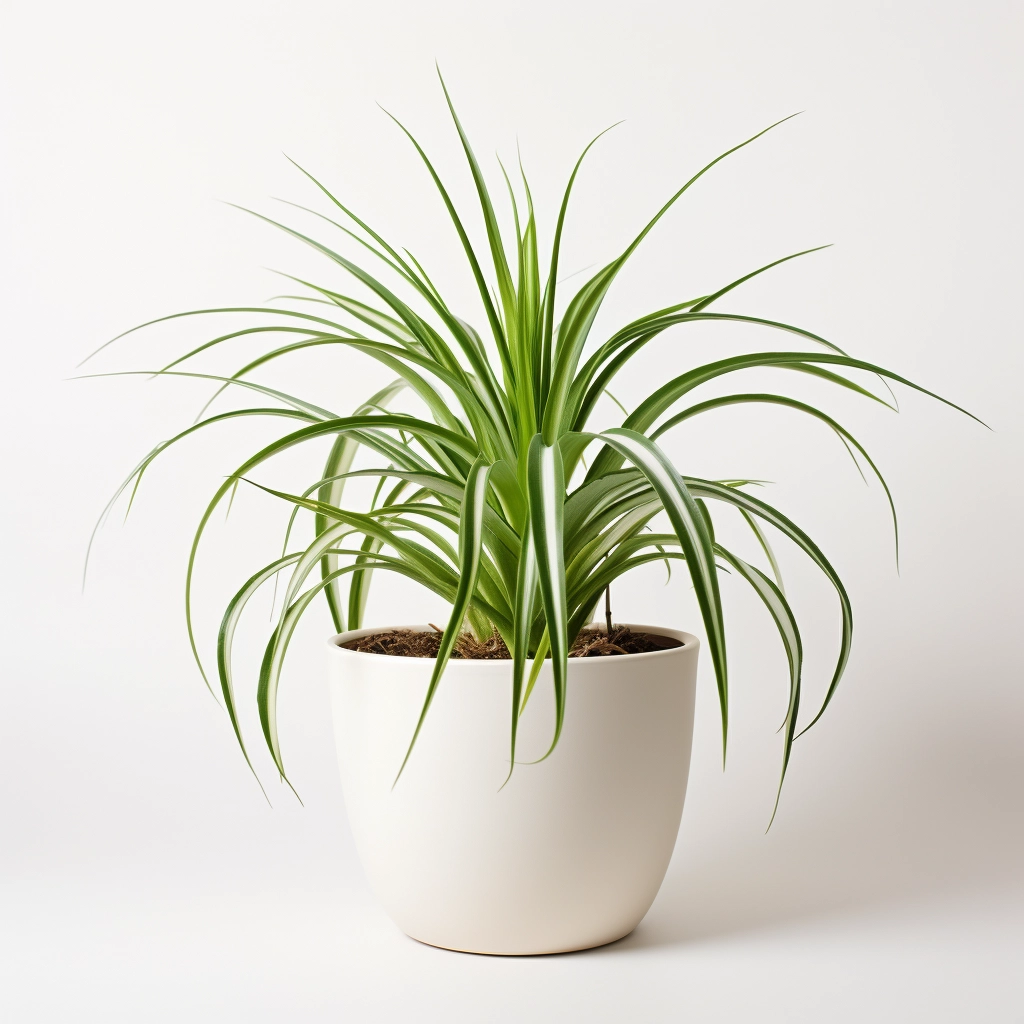Skip to content
The Spider Plant: Spinning a Web of Green Delight in Your Home!
Plant would be Spider-Man’s leafy sidekick! Known for its resilient nature, playful spiderettes, and air-purifying powers, this plant isn’t just a decorative addition to your home—it’s practically a green miracle worker. Whether you’re a seasoned gardener or a newbie plant parent, Spider Plants are the perfect companions for any space.
Why Spider Plants Are the Best Roommates
- Low Maintenance, High Rewards: Forget complicated care schedules. These plants thrive on occasional watering and a little love—perfect for the on-the-go plant parent.
- Nature’s Air Purifier: Did you know Spider Plants were included in NASA’s air-purifying study? They filter out toxins like formaldehyde and carbon monoxide, making your home healthier—one leaf at a time.
- Pet & Kid-Friendly: Safe for curious cats, playful pups, and little ones who might get too handsy with your greenery. (No emergency vet visits here!)
- A Touch of Drama: Their arching leaves and playful spiderettes make Spider Plants a lively addition to any room, adding both beauty and charm.
How to Care for Your Spider Plant
- Water Like Goldilocks: Not too much, not too little. Water once the topsoil feels dry, and watch for signs of overwatering (yellow leaves = too much love).
- Bright but Indirect Light: They adore bright, indirect sunlight but aren’t fans of sunburn—keep them away from harsh direct rays.
- Humidity is Happiness: A tropical plant at heart, they thrive with occasional misting or a nearby humidifier. Bonus: This keeps those leaves looking glossy!
- Feed Me, Plant Parent!: A balanced liquid fertilizer (10-10-10 at half strength) every 4-6 weeks in spring and summer will keep your plant thriving.
- Winter Tip: In colder months, reduce watering and skip the fertilizer. These plants love to rest during the chilly season.
- Summer Tip: If moving your Spider Plant outdoors, ensure it’s in a shaded spot to avoid leaf scorch.
Common Mistakes to Avoid
- Overwatering: Spider Plants hate soggy roots. Always check the soil before watering.
- Too Much Direct Sunlight: Their leaves scorch easily, so keep them in bright but filtered light.
- Neglecting Repotting: These plants grow fast and love room to spread out. Check their roots annually.
- Wrong Soil Mix: Spider Plants love a well-draining soil mix to keep their roots happy. If you don’t have succulent mix on hand, here are some great alternatives that are easy to make at home or find in stores!
Potting and Repotting Tips
1. DIY Well-Draining Mix
You can create your own mix using commonly available materials:
- Ingredients:
- Garden soil (40%)
- Sand or perlite (30%)
- Peat moss or coconut coir (30%)
- Why It Works:
- The sand or perlite ensures drainage, while peat moss or coconut coir retains moisture without waterlogging.
2. General Purpose Potting Soil
- A standard potting soil mix works well if it’s:
- Light and airy.
- Enhanced with sand, perlite, or vermiculite to improve drainage.
- Tip: Avoid heavy garden soils that retain too much moisture.
3. Cactus and Orchid Mix (Blended)
- If you have cactus or orchid mix on hand, blend it with regular potting soil:
- 1 part cactus mix.
- 1 part regular potting soil.
- Why It Works: Cactus mix ensures drainage, and the potting soil provides additional nutrients.
4. Sand or Grit
- Add coarse sand or horticultural grit to regular soil.
- Ratio: 2 parts soil to 1 part sand.
- Why It Works: Sand improves drainage and prevents compacted soil.
5. Compost and Sand
- Combine compost and sand if other options aren’t available:
Equal parts compost and sand (1:1).
- Why It Works: Compost provides nutrients, and sand ensures water flows through quickly.
Important Tips
- Avoid Heavy Soils: Avoid clay-rich or compact soils that can suffocate the roots.
- Monitor Watering: Even with well-draining soil, always check that the topsoil is dry before watering.
Quirky Fun Facts About Spider Plants
- Little Green Spiders: Their name comes from their adorable baby plants (or “spiderettes”) that dangle like little green spiders. These spiderettes are excellent for propagation—making Spider Plants the gift that keeps on giving!
- Myth-Busting: Legend has it that Spider Plants bring luck and positive energy to a home. Whether or not that’s true, they certainly bring lots of green joy!
- Fast Growers: Spider Plants are speed demons when it comes to growth. With proper care, they’ll reward you with bushy leaves and tons of spiderettes.
Common Spider Plant SOS Signals
- Brown Tips: Likely due to fluoride in tap water. Use distilled or rainwater to keep leaves pristine.
- Yellow Leaves: Could mean too much water. Drain excess and let the soil breathe.
- No Spiderettes? Don’t worry—sometimes Spider Plants just need a little more time to mature. Ensure they’re getting plenty of bright, indirect light to encourage growth, and check if their roots are too cramped. A snug pot might be holding them back from producing those adorable baby plants!
- Droopy Leaves: Often a sign of inconsistent watering. Adjust your schedule and your plant will bounce back.
Why Every Home Need A Spider Plant
Spider Plants are the perfect fit for any home, no matter your space or skill level. Their compact size makes them ideal for small apartments or cozy corners, while their air-purifying powers (thanks, NASA!) actively improve your home’s health. Their cheerful green-and-white-striped leaves and quirky spiderettes bring both beauty and character to any room. Whether you’re a newbie plant parent or a seasoned gardener, the Spider Plant is a must-have in your collection.
Ready to Give a Spider Plant a Home?
LeafLovers has all the tips, tricks, and fun facts to help you along the way. From propagation guides to quirky plant trivia, we’re your go-to source for everything green and leafy. Stay tuned for more plant care magic!
